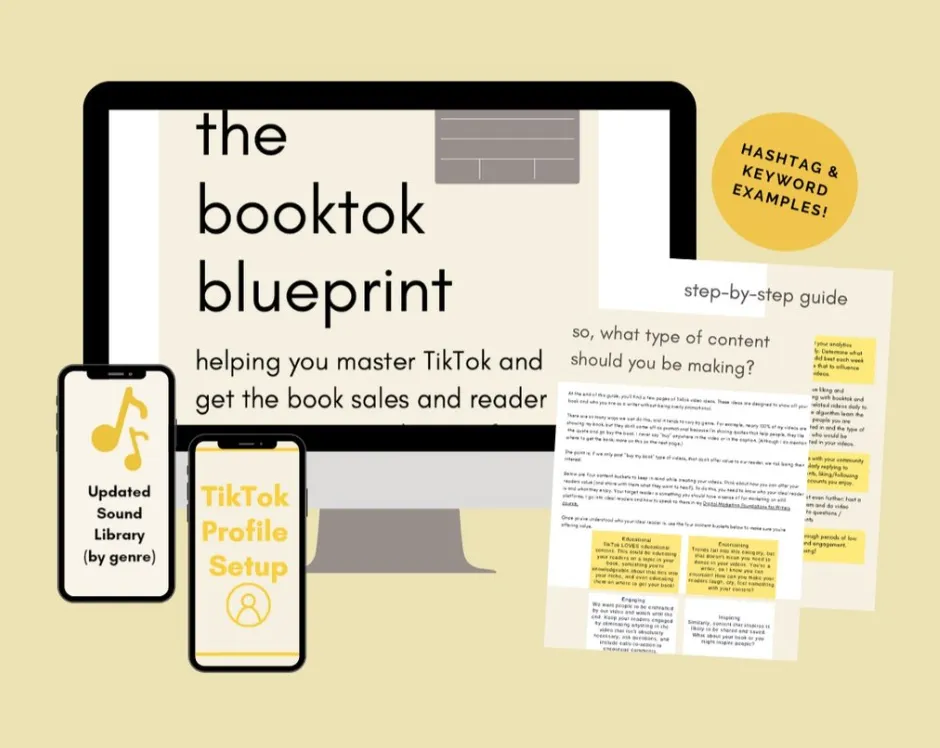
How To Write A Business Book Fast With The Snowflake Method
As a thought leader in business, you know that publishing a book has a multitude of benefits for your business and your personal brand. It shows off your expertise, it's an easy way for people to become familiar with your message and your ideas, it positions you as the subject matter expert you are, it can be utilized in your funnels to build your email list and educate about your offerings, and it's the most impressive business card ever. If you're a speaker a book does even more for you. A good business book can open a lot of doors to you.
64% of business books showed a gross profit...more than 90% reported some form of nonmonetary value in their books, and 89% said writing a book was a good idea. -Business Book ROI Study
But I don't have to convince you that writing and publishing a book is a great move for business owners. It's probably a dream of yours and a personal goal to have your own book published and available to grow a large audience. What most often stops a business owner from becoming a published author is confusion over the different options and not knowing how the publishing industry works. I'm here to tell you that business owners wanting to publish their first book don't need a traditional publisher, there's a far better option. More on that later!
It all starts with your book's topic. Today I'm going to show you how to use The Snowflake Method to easily create an organized outline for your signature book.
The snowflake method is a famous way to flesh out a fiction book's outline created by Randy Ingermanson in the 90s but with a little tweaking, it will work for nonfiction books as well. I've used it to outline every one of my novels and I'm going to use my years of experience as an author to show how you can use this method to quickly start writing your compelling business book. You don't need to be a great writer, you need to be a clear writer.
The idea of the snowflake method is that you start in the center and grow outwards in a fractal pattern, becoming more and more complex as you move outward. The man who created this outlining method was deep into math but all you need to know is that it's a highly effective way to nail the structure of your book from the start.
Not only does this make the editing go far faster later, it also makes it simple to write as you just fill in the outline.
One: The Book Idea
What is your central message and who is your core audience? Don't try to squeeze everything you know into one book, once you learn how to produce your own books you'll be able to publish as many as you want. So let's focus on the purpose of this first book. Think about your target market and one of the main dilemmas they are facing. What is the unique value and unique perspective that you can bring to solving that problem?
Spend about an hour crafting a one sentence summary of your book that summarizes the purpose of your book, including who it is for, the problem it addresses, and how it solves the audience's problem. It's worth really taking your time to get this right. It can also become your hook or elevator pitch for this book in the future, very helpful for marketing and anywhere you tell people you're an author!
Examples:
My book teaches business leaders how to set personal goals with visualization and meditation.
My book demonstrates how leaders in the tech industry can use social media marketing to increase their income.
My book is for small businesses who need the best strategy to manage online reviews.
Two: First Expansion
That one sentence you created is made up of three parts. So now you will expand each of those parts into their own sentence. Who your book is for becomes sentence one. The problem it addresses becomes sentence two. How the book will solve the problem becomes sentence three.
My book is for the top 5% in their industry to dramatically level up their impact. Personal goals are a crucial step to achieving this because it brings intrinsic motivation. Using advanced visualization and meditation techniques, readers of my book will crush those personal goals and advance their careers. (I'm just making this up off the top of my head here, total mumbo jumbo, so hopefully you can see how to apply this to your own book subject!)
Just like a fractal pattern, the outline expands out from the center, growing in complexity evenly all the way around. The more time you put into the snowflake steps, the faster the writing part will go.
Three: Next Expansion
You guessed it, next you'll expand each of those sentences into a paragraph.
Once you have three paragraphs, you have a solid idea of the beginning, middle, and end of your book.
Using my silly example, here are the three paragraphs I might write:
Leaders in the top 5% of their industry are clearly motivated individuals who are driven to make an impact in their work. Unfortunately at the upper levels they often feel lost when it comes to the next step. The path to the top has been clear but now that they are at the top it's not clear where to go next and they feel they haven't made their mark on the world yet.
After years of being given external motivations, many industry leaders never learned to set personal goals that are driven by internal factors. When it comes to deciding what goals they want to pursue, they flounder. Few people understand that this is the issue and instead leaders start to think they are experiencing burnout from their decades of work when the truth is they have even more room to grow.
With my signature combination of visualization and unique meditations the most successful people in the world can find new avenues for their ambition and become energized again in their career. Step one is blah blah blah, step two is blah blah blah, follow these steps for x days.
Looking at paragraph one make sure it answers these questions:
Who is the target audience for this book?
Where are they stuck?
What do they want?
In paragraph two dig deeper into the problem that your book is aiming to solve. Note down everything you know about the problem and how it makes your reader feel, how it is impacting his life.
Expand paragraph three into your solution. Tease apart each step of your solution, explain how it addresses the pain points, note down any examples or case studies you can show.
Add a conclusion where you'll connect the dots and make it crystal clear how the solution addresses the problem and the transformation that can occur in the reader's life. Finally, consider what action you want a reader to take when they finish the book. Could they reach out to work with you? Is there a course that can help guide them further in solving their problem? Can they hire you to present a keynote at their company?
Four: The Full Outline
You should start to see how you can list out a chapter-by-chapter breakdown that's already structured like a successful book. My three paragraphs might turn into:
Introduction: You are a leader at the top of your industry, and you're feeling lost about your next steps. I am blankety blank and I know exactly how to solve this issue. I've worked with others like you such as blah blah blah
Chapter One: You are feeling like you still haven't made your mark on the world. The root of this problem is... I discovered this because...
Chapter Two: What you need to know and understand is internal factors are the key. You've already exhausted the external factors. Burnout is not inevitable, you have further to grow.
Chapter Three: Part one of the solution. The start of my signature combination of visualization and meditations is with this exercise...
Chapter Four: Once you've mastered that, you need to...
Chapter Five: Examples of others who have made this transformations.
Conclusion: This is how the solution solves the problem. Here's how you can work with me to customize this system to you.
That's it, you have an outline for the book that's going to expand your reach and influence! Now you've got the makings of not just a good book but a great book! With the outline done, it's time to start writing.
Think of your outline as the skeleton of your book or, to continue the snowflake metaphor, it's the frame of the flake and as you write you add more and more complexity to each limb. In the first draft, your job is to flesh your outline out with insights, examples, and actionable takeaways. A great way to write that first draft quickly is by leveraging content you’ve already created.
If you’ve written blog posts, social media content, emails, or even recorded podcasts or webinars, don’t let that valuable material go to waste. While I’m not suggesting you copy and paste existing content verbatim, you can repurpose and expand on key points, turning shorter pieces into fully developed chapters.
Here's a few tips on how to do that. First, review your content and match them up with the relevant sections of your outline. See where you can expand on a topic. In a book you have more room to go deep on a subject.
You'll have the potential for a bestselling business book in record time if you follow this entire process.
Now what if you could get instant access to a template already filled in with these sections for you to drop your words into, keeping you on track to finish your book in record time?

Well, you're in luck! You can get exactly that for free right now.
And over the next few days I'll be sending you super useful information about getting your book published and out into the world. We'll talk hybrid publishing vs self-publishing and how you can fully control the process to get your vision just right and have the book ready for your audience years faster than traditional publishing. I've even got an added-bonus of a 30% off coupon coming your way!



